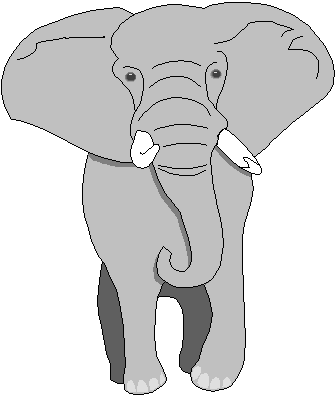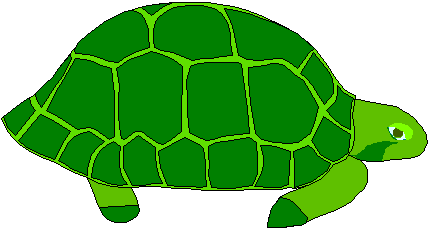
T
ECHNOLOGY LESSON PLANS http://www.edneb.org/IPS/Issu/SCI/scienSTND.htmlLesson 1
https://gap237.tripod.com/webquest.htmLesson topic/Title
: LET'S GO TO THE ZOOAuthor: Laura Bazant
Introduction: This lesson is for average 4th and 5th graders who have an understanding of animals and how to use a computer.
Content Area(s) and grade Level: science, language arts and technology and is for 4th and 5th graders
Standards:
http://www.edneb.org/IPS/Issu/SCI/scienSTND.html4.4.1 By the end of fourth grade, students will develop an understanding of the characteristics of living
things.
4.6.1 By the end of fourth grade, students will develop an understanding of technological design.
4.7.4 By the end of fourth grade, students will develop an understanding of how science and technology
helps communities resolve problems.
Objectives: Students will be able to:
Materials/Technologies:
Let's go to the Zoo Web Quest
https://gap237.tripod.com/webquest.htmPaper
Ability to go on a field trip to the zoo
Video Camera or Digital Camera
Procedures:
https://gap237.tripod.com/webquest.htm Listed under task on Web QuestClosure: By completing this activity each group has had the opportunity to gain knowledge about the many different aspects of the zoo and written a report influencing other people to visit the zoo. Alright everyone, "Let's Go To The Zoo!"
.
Assessment:
| CRITERIA |
ALWAYS (5) |
SOMETIMES (2-4) |
NEVER (0) |
|
1. Report is handed in on time. |
|||
|
2. Report is 1-2 pages in length. |
|||
|
3. Report persuades the reader to visit the zoo. |
|||
|
4. Report lists 5 animals and 10 facts about each. |
|||
|
5. Report specifically tells about the group's idea of the MOST EXCITING fact, feature, or animal. |
|||
|
6. Group worked well together. |
|||
|
7. Group evaluations completed. |
|||
|
8. Has all the required information in the database. |
|||
|
9. Has database neatly done and labeled correctly. |
|||
|
10. Has a written paragraph about an idea for their advertisement/commercial. |
| TOTAL AMOUNT OF POINTS (50) |
Explanation: I chose this activity because it uses the use of a Web Quest and it gets the students to decipher what information is really needed. I also like that after they do all of their given assignment over the zoo, they are given a chance to visit it and see what they have learned about.

Lesson 2
http://brainpop.com/science/plantsandanimals/fivekingdoms/index.asp
Lesson topic/Title:
Plants and AnimalsAuthor: Laura Bazant
Introduction: This activity is for the average student who can maneuver around the Internet. The student also needs to be able to sort information out by watching an Internet movie
Content Area(s) and grade Level:
This activity is for 4th and 5th grade and uses science and technology
NCTM Standards:
http://www.edneb.org/IPS/Issu/SCI/scienSTND.htmlIn grades K-4, the mathematics curriculum should include experiences with data analysis and probability so those students can--
Nebraska Standards:
4.5.1 By the end of fourth grade, students will collect, organize, represent, and interpret numerical and categorical data and clearly communicate the findings
National Educational Technology Standards:
Objectives:
Materials/Technologies:
Procedures:
Spring Board:
The students will be shown examples of monera and protista and explained to that they will be watching a video on the different 5 kingdoms.
What the Teacher is to do:
The teacher needs to have ready the screen so that the movie will be shown on one screen, she also needs to have copies of the activity sheet ready.
What the Students are to do:
Activities:
Closure:
The students will go over the video and will in a group be shown different examples of the five kingdoms and asked to identify them.
Assessment:
The teacher will be able to assess the students by their answers on their activity sheet.
Explanation:
I choose this activity because I think it is important for children to be able to receive exposure to different learning types. By watching an entertaining movie they are becoming interested and having to use their activity sheet to correspond the information together.

Lesson 3
http://www.discovery.com/area/science/micro/micro1.htmlLesson topic/Title: The Amazing Butterfly
Author:
Laura BazantIntroduction: This lesson is for the average 4th or 5th grade student who is being taught about the cycles of nature. They need to have a good understanding of science.
Content Area(s) and grade Level: 4th and 5th
Standards:
http://www.edneb.org/IPS/Issu/SCI/scienSTND.html4.1.1 By the end of fourth grade, students will develop an understanding of systems, order, and
organization.
4.1.2 By the end of fourth grade, students will develop an understanding of evidence, models, and
explanation.
4.3.1 By the end of fourth grade, students will develop an understanding of the characteristics of objects
and materials
4.4.2 By the end of fourth grade, students will develop an understanding of the life cycles of living things.
4.4.3 By the end of fourth grade, students will develop an understanding of living things and environments.
Language:
4.1.3 Students will identify the basic facts and essential ideas in what they have read or viewed.
Integrated Disciplines: Language
, Science, Art, and technologyObjectives:
Materials/Technologies:
Procedures:
Spring Board:
The students will first sit on the floor and read THE VERY HUNGRY CATERPILLAR and discuss the changes of a caterpillar into a butterfly.
What teacher is to do:
What student is to do:
CATERPILLER
Fuzzy, wuzzy, creepy crawly
Caterpillar funny
You will be a butterfly
When the days are sunny.
Wiggling, flinging, dancing, springing
Butterfly so yellow,
You were once a caterpillar,
Wriggly, wiggly, fellow
By, Lillian Vabada
Closure: The lesson will end with every student using his or her butterfly to act out the poem
Assessment: The will discuss the stages of the butterfly to see if they understand them
Explanation: I chose this lesson because the butterfly scale is very neat to look at and it is very important to know the stages of nature, and all children love butterflies.
References:
Where do butterflies come from?
www.hhmi.org/coolscience/butterfly/index.htmlCaterpillars to butterflies
www.ofcn.org/cyber.serv/academy/ace/sci/cecsci061.html
Lesson 4
http://k-2.stanford.edu/creatures/javafrog http://frog.simplenet.com/froggy/origami/index.shtmlLesson topic/Title
Author: Laura Bazant
Introduction: This activity is for average student with good eye hand coordination
Content Area(s) and grade Level:
4th and 5th gradeStandards:
http://www.edneb.org/IPS/Issu/SCI/scienSTND.html4.6.1 By the end of fourth grade, students will develop an understanding of technological design.
4.7.4 By the end of fourth grade, students will develop an understanding of how science and technology
helps communities resolve problems.
Integrated Disciplines: Science, Art, and technology
Objectives:
The student will be able to follow instructions given and play the frog game
Students will be able to follow simple origami from instructions and make their own frog.
Materials/Technologies:
Procedures:
Spring Board: The students will see a live frog and let it jump around in its cage
What teacher is to do: The teacher needs to have the following origami frogs sheet printed out and provide origami paper for the students. The teacher will also first go over the game with the students.
What students are to do:
This activity is to go along with a frog unit
1. The student needs to read the following instructions and then go to the following address
http://k-2.stanford.edu/creatures/javafrogThe
goal of the Jumping Frog game is to accumulate as many "frog lives" as possible. This is done by eating as many flies as you can (withoutgetting too heavy) and by jumping in to the pond (to avoid predators). The more flies you eat and the more predators you evade, the more frog
lives you get, as shown in the frog lives box:
When you see a fly buzzing in front of you, you can eat the fly by clicking on it when it is nearby (that is, within
Tongue's reach). If at first you miss the fly, you can keep clicking until you get it (but not after it flies over your head). When you catch it, you
Will hear a slurping sound.
Some frogs (such as desert frogs) can go for long periods of time without water. However, most frogs (especially pond frogs) need a lot of
Water to survive.
The way to accumulate frog lives is by jumping into the pond.
However, you need to have enough energy stored in your muscles, as depicted by the "Force-O-meter".
You can jump by simply pressing the jump button.
Careful though! In order to jump into the pond, you have to make sure you have enough energy stored to generate enough force to reach the
Pond. If you miss the pond, you will splat onto the ground, and will most surely be eaten by a predator. To make
Sure you jump into the pond, you have to set your jump angle correctly so that your jump trajectory will end up in the pond. You can set your
Jump angle using the angle dial.
If you set the angle too shallow (near zero), your jump will short and not very high. Likewise, if you set your angle too steep (near 90 degrees),
Your jump will be high, but not very long. You will have to experiment with the jump angle to find out what is the appropriate setting for the
Amount of force you have stored up (as shown in the "Force-O-meter").
2. After the game is played students will make origami frogs by following the given sheet.
Closure: The students will be able to have races with their frogs and show off how they did them.
Assessment: The score on the games and how well the frog is made will prove as an assessment.
Explanation: This lesson was picked because I think that frogs can provide a lot of information. By letting children act and play games like frogs they can get a better understanding of them.

Lesson 5
http://waz3.hypermart.net/htm/owl.htmLesson topic/Title: OWLS
Author: Laura Bazant
Introduction: this lesson is for average students
Content Area(s) and grade Level: grades 4th and 5th
Standards:
http://www.edneb.org/IPS/Issu/SCI/scienSTND.html4.2.1 By the end of fourth grade, students will develop the abilities needed to do scientific inquiry.
4.3.1 By the end of fourth grade, students will develop an understanding of the characteristics of objects
and materials. 4.4.1 By the end of fourth grade, students will develop an understanding of the characteristics of living
things. 4.4.2 By the end of fourth grade, students will develop an understanding of the life cycles of living things.
Integrated Disciplines: science and technology
Objectives:
Materials/Technologies:
Project Wild
PO Box 59
Portland, OR 97207
Procedures:
Spring Board:
Students will get into groups of three and 4 and get on the computer to the site
http://waz3.hypermart.net/htm/owl.htm to look up different owls.What teacher is to do:
The teacher needs to have plenty of owl pellets for the class and have the owl book
What student is to do:
Divide the students into small groups of three or four. Give each
Group an owl pellet. (Precaution--it's a good idea to have frozen
The owl pellets prior to the activity.)
Students can then take apart the owl pellet being careful to
Separate all the tiny bones from the fur. It's useful at this
Point to have a health textbook available with pictures of the
Various bones.
Once all the bones are separated the students can then start
Reconstructing their rodent onto the tagboard.
Closure:
Upon completion of this activity students
Can observe the different rodent's owls have consumed. A
Comparison can be made to which group had the most complete
Skeleton. These tagboards of animal skeletons make a very
Interesting display.
Assessment: The assembled tagboard will be the assessment for this project
Explanation: The use of showing owls and then actually having the students dissects the owl a pellet is a lot of fun and it really shows how the owls function in their life.
References:
http://ofcn.org/cyber.serv/academy/ace/sci/cecsci/cecsci019.htmlProject Wild
